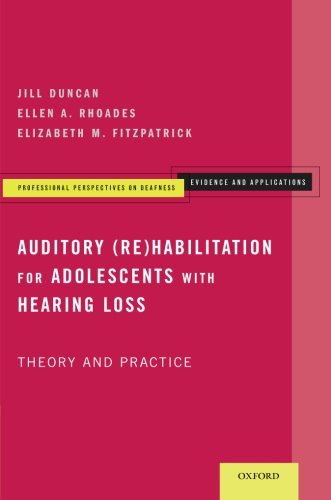کتابچه راهنمای چاقی ۲۰۱۴
Handbook of Obesity 2014
دانلود کتاب کتابچه راهنمای چاقی ۲۰۱۴ (Handbook of Obesity 2014) با لینک مستقیم و فرمت pdf (پی دی اف)
| نویسنده |
Claude Bouchard, George A. Bray |
|---|
| تعداد صفحهها |
1231 |
|---|---|
| نوع فایل |
|
| حجم |
42 Mb |
| سال انتشار |
2014 |
89,000 تومان
معرفی کتاب کتابچه راهنمای چاقی ۲۰۱۴
این مجموعه دو جلدی شامل جلد 1 ویرایش سوم و جلد 2 نسخه چهارم است که هر دو در سال 2014 منتشر شده اند.
در سال های اخیر، ما درک بهتری از محتوای بیولوژیکی و سایر عوامل ایجاد کرده ایم. در ایجاد چاقی نقش دارد. آزمایشات بالینی جدید، اکتشافات مربوط به استفاده از داروها، و درک بیشتر از مزایای کاهش وزن در بیماران چاق، زمینه تحقیقات در این زمینه را گسترش داده است. با بازتاب درک در حال تکامل ما از علل و پیامدها، راهنمای چاقی دو جلدی هر جنبه ای از این بیماری را از علت تا درمان بررسی می کند.
جلد 1: اپیدمیولوژی، اتیولوژی، و آسیب شناسی فیزیولوژیکی پوشش جامعی از عوامل بیولوژیکی، رفتاری و محیطی این بیماری جدی را ارائه می دهد. این نسخه جدید به پنج بخش تقسیم شده است که عوامل اساسی درگیر در تحقیقات چاقی را بررسی می کند:
- تاریخچه، تعاریف، و شیوع: تغییرات در طول زمان در اطراف ما مفهوم چاقی، ویژگی های چاقی و اپیدمیولوژی چاقی در جمعیت های مختلف
- تعیین کننده های بیولوژیکی چاقی: شواهد ژنتیکی و اپی ژنتیکی، زندگی جنین و اثرات پس از تولد، استفاده از مدل های حیوانی در تحقیقات، مسائل غدد درون ریز، جنبه های مولکولی، و مسائل مربوط به عفونت ویروسی و چاقی
- عوامل تعیین کننده رفتاری چاقی: اثرات غذا، رفتار بلع، استعمال دخانیات، شیردهی، مدت زمان خواب و زمان فعالیت کار/ اوقات فراغت و رفتار کم تحرک
- محیط، فرهنگی اجتماعی عوامل تعیین کننده چاقی: نقش کشاورزی، صنایع غذایی، محیط شهری، جنبه های اجتماعی-اقتصادی، عوامل فرهنگی و آلاینده های محیطی اقتصاد هزینه های میکروفون
- پیامدهای چاقی: چگونه وزن اضافی بر طیفی از شرایط تاثیر می گذارد و آن را تشدید می کند بیماری های همراه، از جمله دیابت، بیماری های قلبی عروقی، اختلالات ریوی، آرتریت و سرطان
<
جلد دوم: کاربردهای بالینی
b> عوامل اولیه ای را که به پیشگیری و درمان چاقی کمک می کنند بررسی می کند:
- پیشگیری از چاقی: استراتژی هایی مانند مهندسی مجدد محیطی برای تشویق فعالیت بدنی و جلوگیری از افزایش وزن بیش از حد در کودکان و بزرگسالان
- ارزیابی بیماران مبتلا به اضافه وزن یا چاقی: روش های ارزیابی فرد دارای اضافه وزن و نقش پزشک مراقبت های اولیه در مدیریت بیمار
- مسائل چاقی پزشکی و مدیریت وزن در چاقی: سبک زندگی برای کاهش وزن و حفظ وزن، رژیم غذایی و ورزش، داروها و داروهای گیاهی، و مسائل مربوط به چاقی کودکان li>
- جراحی: معاینه جراحی چاقی، بستن لاپاراسکوپی، لیپوساکشن و سایر تکنیک ها و استراتژی دستگاه های جراحی برای مراقبت های جراحی و بعد از عمل
- نتیجه گیری: ارزیابی اقتصادی و اثربخشی هزینه درمان های چاقی، نحوه نگرش به چاقی در سطح جهان و پاسخ های دولت به چالش های ناشی از شیوع رو به رشد چاقی
این جزء دو جلدی برای ارائه دهندگان مراقبت های بهداشتی ضروری است که به دنبال راهنمای جامع و به روز برای تشخیص و درمان بیماران مبتلا به چاقی هستند.
This 2 volume set comprises of the 3rd edition of Volume 1 and the 4th edition of Volume 2, both published in 2014.
In recent years, we've developed a much better grasp of the biological and other factors associated with the development of obesity. New clinical trials, discoveries related to drug use, and greater understanding of the benefits of weight loss in obese patients have expanded the field of research in this area. Reflecting our evolving understanding of causes and consequences, the two-volume set Handbook of Obesity explores every facet of this disease from cause to cure.
Volume One: Epidemiology, Etiology, and Physiopathology provides comprehensive coverage of the biological, behavioral, and environmental determinants of this critical illness. This new edition is divided into five sections exploring essential factors involved in obesity research:
- History, Definitions, and Prevalence: Changes over time surrounding our notion of obesity, adiposity traits, and the epidemiology of obesity in various populations
- Biological Determinants of Obesity: Genetic and epigenetic evidence, fetal life and postnatal influences, the use of animal models in research, endocrine issues, molecular aspects, and issues related to viral infection and adiposity
- Behavioral Determinants of Obesity: The effects of food and ingestive behavior, smoking, breastfeeding, sleep duration, work/leisure time activity, and sedentary behavior
- Environmental, Social, and Cultural Determinants of Obesity: The role of agriculture and the food industry, the urban environment, social and economic aspects, cultural factors, environmental pollutants, and economic costs
- Consequences of Obesity: How excess weight affects and exacerbates a range of comorbid conditions, including diabetes, cardiovascular disease, pulmonary disorders, arthritis, and cancer
Volume Two: Clinical Applications explores essential factors involved in obesity prevention and treatment:
- Prevention of Obesity: Strategies such as reengineering the environment to encourage physical activity and prevent excessive weight gain in children and adults
- Evaluation of the Overweight or Obese Patient: Methods for assessing the overweight individual and the role of the primary care physician in patient management
- Medical Treatment of Obesity and Weight Management Issues in the Treatment of Obesity: Lifestyle for weight loss and weight maintenance, diet and exercise, medications, herbal agents, and issues related to childhood obesity
- Surgery: Screening for bariatric surgery, laparoscopic banding, liposuction, and other surgical techniques and strategies for operative and postoperative care
- Epilogue: The economic assessment and cost-effectiveness of treatments for obesity, how obesity is viewed internationally, and governmental responses to challenges arising from the growing prevalence of obesity
Presenting the insight of international experts and edited by two eminent leaders in obesity research, this two-volume set is essential for health care providers in search of a comprehensive and up-to-date guide to diagnosing and treating obese patients.















